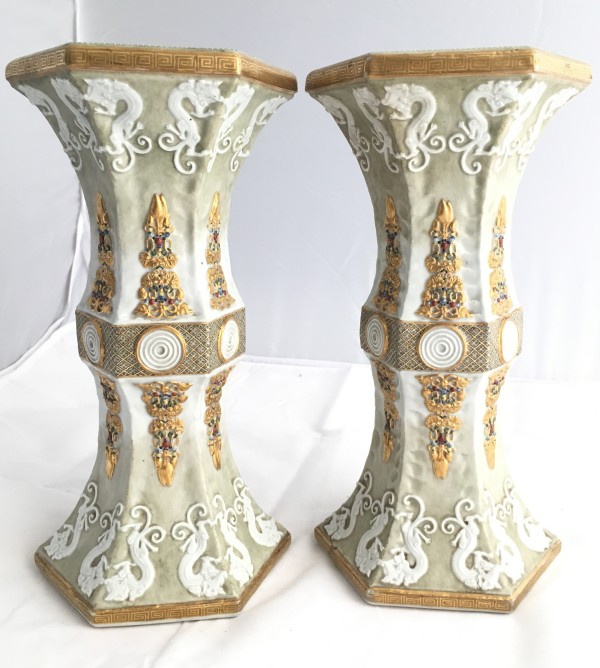
Moriage is a common name on slip or colored clay string decoration, mostly on Japanese porcelain, in look not unlike 'cake frosting' in which a diluted clay has been used to give the piece a three dimensional appearance.
A painstaking technique involved building up areas of enamel to produce a three-dimensional effect.
Moriage is also a common name on slip or colored clay string decoration, mostly on Japanese porcelain, in look not unlike 'cake frosting' in which a diluted clay has been used to give the piece a three dimensional appearance. Produced in Japan from the end of the 1800s until the mid 1900s reflecting the western interest in the exotic of the late 19th century period. Over the time styles and materials have changed.
One well known type of Japanese export porcelain where this kind of decoration occurs, are thin walled porcelain tea sets decorated with a women's face in high relief in the bases, called lithophanes. This feature together with vivid dragons in moriage was made during the late 1930s into the late 1950s.
At the end of the 20th century this technique was developed by the Chinese porcelain industry into "Satsuma" looking porcelain, where bright enamels on a porcelain base was combined with raised gilded slip enamels.
Most "Dragonware" pieces are decorated with moriage.
See also Dragonware and Lithophane
A